SPARE PARTS

Tungsten Carbide Nozzle with Aluminium Jacket Coarse Thread 50mm

CT-Nozzle (TC) with fine thread 3/4``
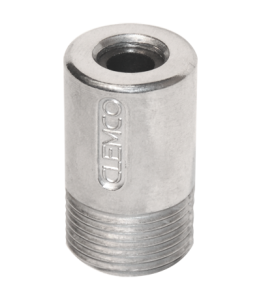
CT-Nozzle (TC) with Coarse Thread 25 mm
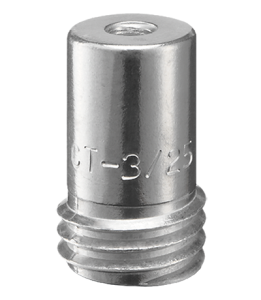
Tungsten Carbide Blast Nozzle CLEMLAST
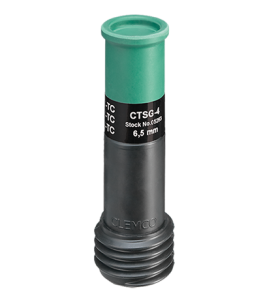
Blast Nozzle
When selecting the right nozzle, please note the following points: Nozzle size (Ø): In addition to the area to be blasted, the choice of nozzle size must also be based on the compressed air available from the compressor. Depending on the available air, the largest nozzle possible should be used, as this also achieves the greatest possible coverage at the same time. This is crucial for economical work in terms of labour costs, blast media costs, compressor costs, and costs for set-up time. It should also be taken into account, however, that nozzles erode over time due to wear, increasing the nozzle diameter, which also then requires more compressed air at the same time. Therefore, the user should inspect the nozzle diameter regularly (e.g. with a drill bit with the appropriate diameter) and the nozzle should be replaced if necessary. If this is not done, the compressor may not produce the required power, and the nozzle will lose its effectiveness. Nozzle length: In addition to the available space, as in the example of angled constructions, the length of the nozzle is determined by the type of surface to be cleaned. A longer nozzle should be selected for surfaces that are hard to clean. The extended nozzle length produces a Venturi effect, allowing the nozzle to achieve more power. The Venturi effect is produced by a narrowing of the nozzle, which increases the speed of the blast media / air mixture. Because of their shorter construction, small nozzles can create this effect only to a limited extent or not at all. For this reason, they are more suitable for cleaning structures that require blasting with greater pinpoint precision. Material: In order to provide high-quality sandblasting nozzles, Clemco nozzles are generally made of several different materials. We offer nozzles with an aluminium jacket as well as nozzles with a rubber jacket. The question here has to do with where the nozzle is used. The nozzle with an aluminium jacket is the tougher version. But the more impact-resistant nozzle, as in cases of frequent falls or bumping during construction, for example, is the nozzle with a rubber jacket. The determining factor in the selection of the right nozzle is certainly the choice of the right nozzle liner. At Clemco, we essentially distinguish among three different liners:
- Tungsten carbide: This material is very tough and abrasion-resistant, and as such is the most resistant to impact. Therefore it is especially suitable for use on construction sites where the nozzle is also subject to frequent impacts, for example.
- Silicon carbide: Silicon carbide provides a good mixture of impact and abrasion resistance. This material is more abrasion-resistant than tungsten carbide, but on the other hand is more sensitive to impacts. Therefore, nozzles with silicon carbide liners are good all-round nozzles for everyday use in different places and with different blast media.
- Boron carbide: This material is extremely abrasion-resistant and thus is especially durable. Therefore it is particularly suitable for extremely sharp-edged and/or aggressive blast media like corundum and garnet, as well as for multiple-shift operations and daily use. But it is somewhat more sensitive to impacts and thus suitable for stationary applications
In general, however, these are just rough guidelines and every user must find the right liner for his work and the right price-performance ratio for himself. Apart from the structure of the nozzle, the handling of the nozzle also plays a determining role in the durability, and thus of the economic success of the blasting work.
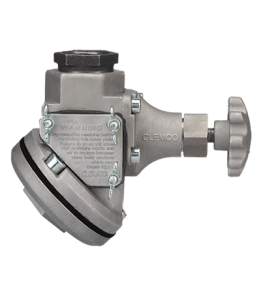
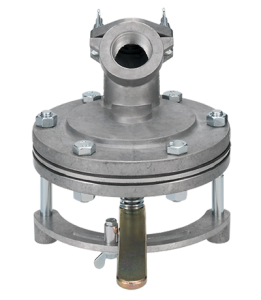
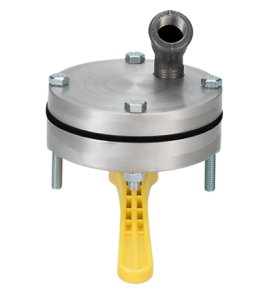
Metering Valve
The Clemco product line contains different abrasive metering valves that are used for different purposes in each case. Here is a list of the most important valves
SA abrasive metering valve: This valve is used especially in our cabins. It is compact and is also available in a rubberised version. The rubber coating prevents wear, making this valve ideal for permanent installation in a cabin
FSV abrasive metering valve: Easy metering by means of a slide valve. It is particularly rugged and is therefore optimal for outside use, such as on construction sites, for example.
Quantum K (QK) abrasive metering valve: Unlike the FSV valve, this metering valve has an adjustment knob that can be used for especially precise metering. Its construction makes it especially suitable for aggressive and fine blast media
PT abrasive metering valve: This valve has an adjustment knob for abrasive metering and is operated pneumatically. It is coupled to the deadman handle and the compressed air, and opens only when actuated by compressed air; otherwise, the valve is closed. On the one hand, this saves blast media, and on the other hand, the blast machine can also be used to blow off the blasted object with pure compressed air. In addition, it is also optimal for automatic blasting processes that require an even blast media flow.

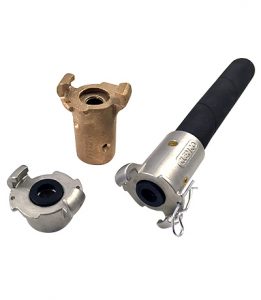
Hose couplings and nozzle holders
Clemco offers a comprehensive range of different hose couplings and nozzle holders to fit common hoses and nozzles.
On the one hand, a hose coupling allows the blast hose to be extended as desired, and on the other hand, the coupling allows different hose diameters to be connected. But in both cases, attention must be drawn to the fact that a hose that is too long and the reduction of hose cross sections can impact the blasting performance, depending on the system and set-up. Our hose couplings are constructed in such a way that the cross section between the couplings is narrowed as little as possible or even not at all.
We place great importance on high-quality materials for our hose couplings. For example, our nylon couplings fit very snugly and are especially break-resistant. Perfectly fitting seals prevent air circulation, which contributes to the erosion of couplings, nozzle holders, and nozzles. Because of the simple claw system, the couplings are used easily as quick couplings, and the accompanying safety pin satisfies the safe handling requirements for hose connections.
Our nozzle holders are available for coarse threads as well as fine thread nozzles and cover all normal hose diameters. The nylon used makes the nozzle holders especially light, so they do not interfere with the work, but are still extremely tough. This material is widely accepted in the market. The screw system allows nozzles to be changed quickly so they can always be adapted to the respective blasting situation. But attention must always be given to the seal to ensure that it is intact and fits.
